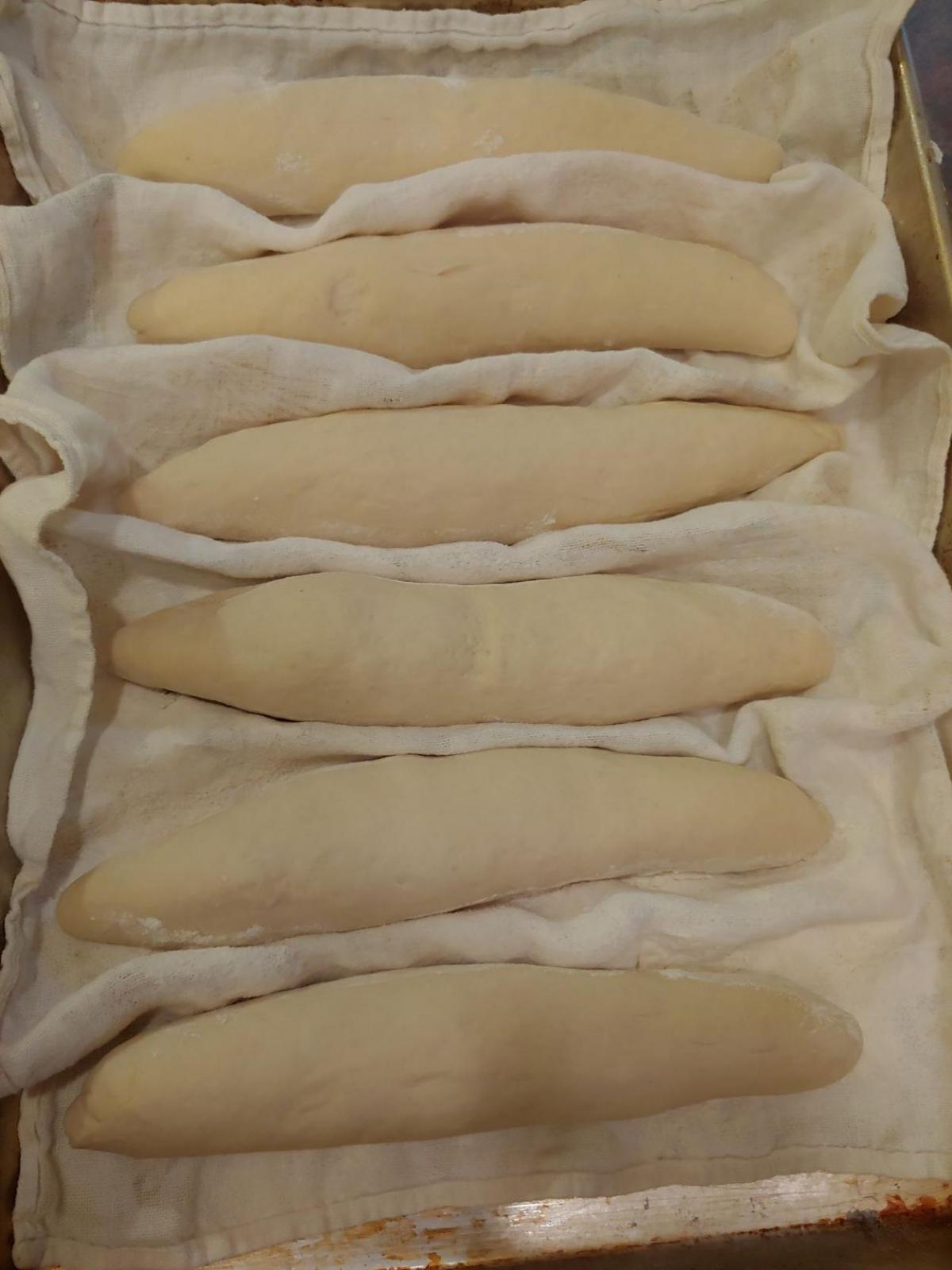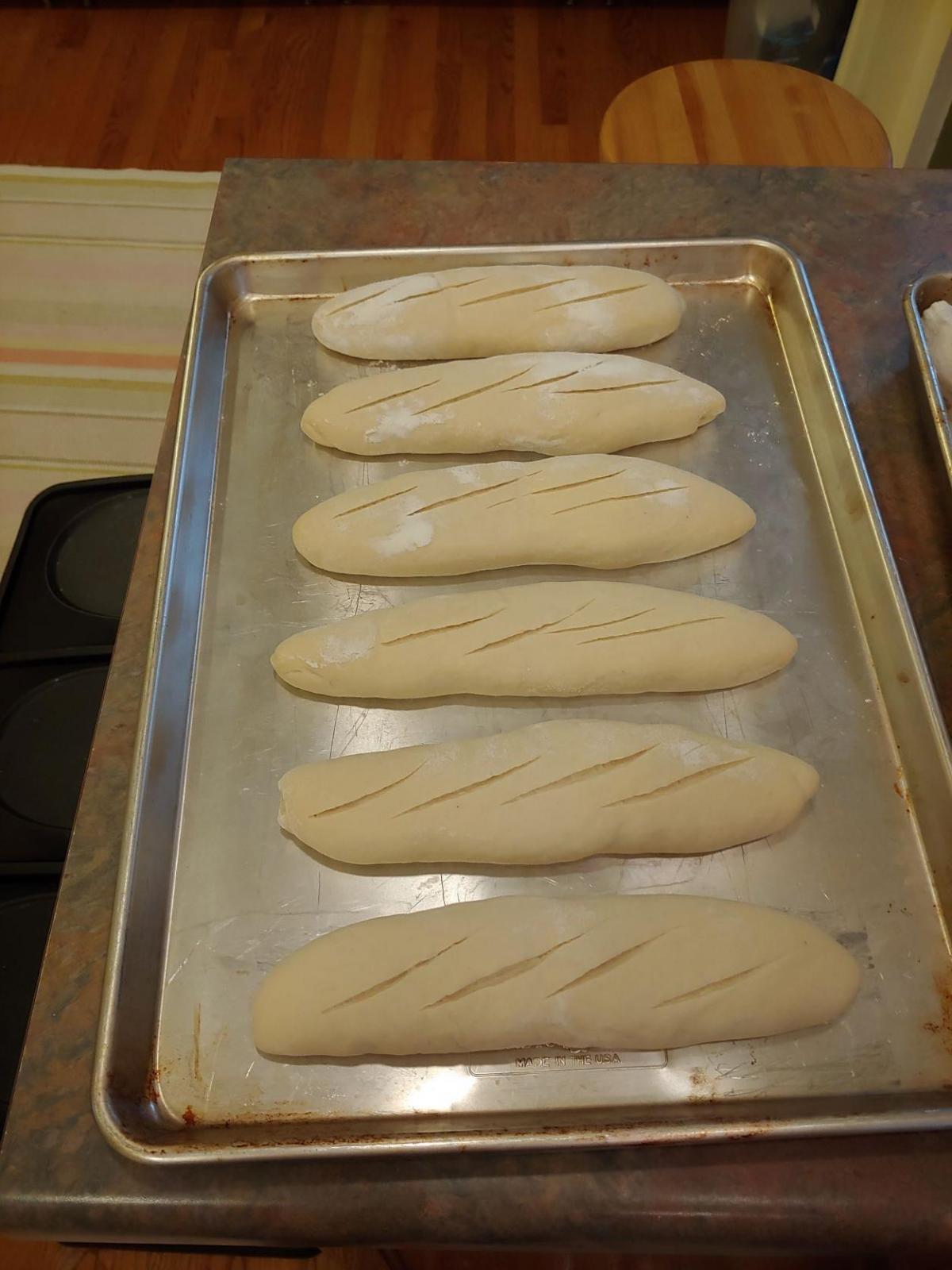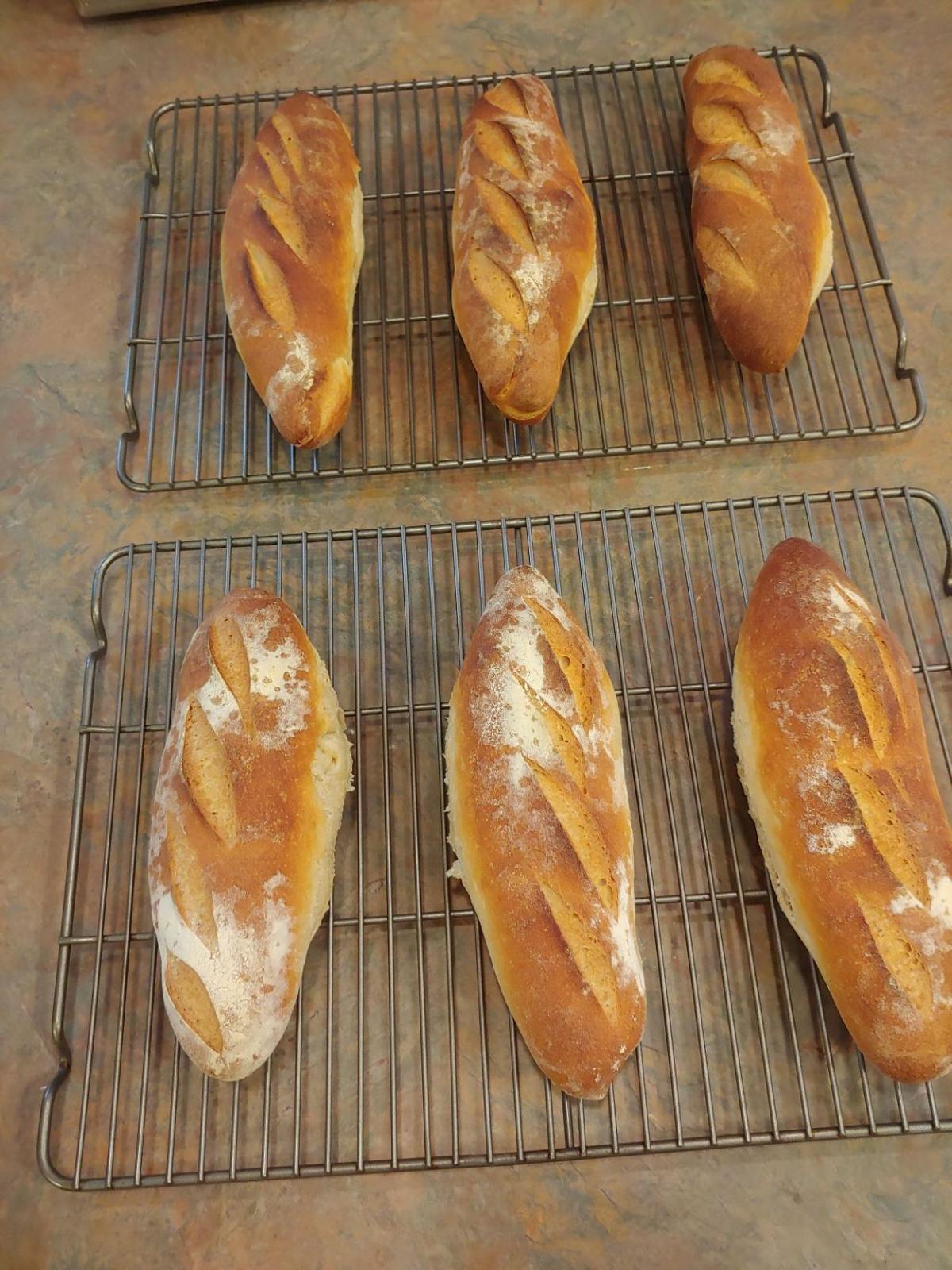
Dough coming out heavy and dense no matter what recipe
Here's the problem I'm having. My dough is always turning out dense when baked and never looks anything like the recipe, either during the dough stage or after baking.
I am fairly new to baking, but I've already looked at dozens and dozens of articles and I'm not really seeing anything helpful for this problem (or rather I'm seeing tons of things that are possible to do wrong, but as far as I can tell, I'm not doing any of them wrong).
I meticulously use a digital scale and follow the recipe to the letter in amounts and times. I use high quality King Arthur bread flour or high-gluten flour. I use SAF instant yeast. I use an instant read thermometer to make sure my water isn't too hot or too cold. I've used morton kosher salt and fancytown bread salt from King Arthur. I don't put the salt in with the yeast. I've used a thermometer and verified that my oven temperature spot on. I've watched a ton of videos on kneading, and I'm fairly certain my technique is fine (I've been using the press-turn-fold-repeat method FWIW).
That seems to be about all of the advice that the internet bread experts have to offer. But none of it has helped.
This morning, for instance, I kneaded a baguette dough for nearly 20 minutes, checking it every couple of minutes after 6 minutes, and yet it never reached the window pane stage. Eventually, I had to get to work so I gave up and called it good enough (it probably isn't, but who doesn't love dense baguettes?) and put it in the fridge to proof overnight as the recipe called for.
If I had to describe the consistency, I'd say it's extremely firm... pretty dry (much drier than the pictures and video for the recipe, despite me adding nearly 1/4 of water throughout the kneading)... also the texture is not very smooth. And when I do the "fold" part of the press-turn-fold, there's usually quite a bit of tearing rather than stretching.
At this point, I'm starting to suspect the yeast. Is there a way to tell if instant yeast has gone bad? I know you can bloom test active dry, but I don't know about instant.
Also, even though I have absolutely no evidence to support this, I'm starting to wonder if it's not an environmental problem. Basically, the problem being that I live in Chicago, which means several things. First, during the colder months (basically October through April), it usually never gets above 65 degrees in my kitchen unless the oven is on. Second, I have forced air heating so the environment indoors is dry, dry, dry, dry, dry. Third, the water in Chicago is fairly hard (about 8.8).
Beyond that... I just don't know... I throw myself on your mercy.
Any ideas, help, guidance, or kind-hearted well-meaning abuse would be appreciated.


A few points that jumped out:
1) It’s pretty hard to knead a dough to windowpane by hand. But most hearth loaves don’t require you to get anywhere near that far. As far as I’m aware, the recipes that require windowpane tend to be soft, enriched breads. I would start with a recipe that doesn’t require super-intensive kneading.
2) If your room is cold, you will definitely need longer rising times, even if your water is the right temperature. And I don’t mean longer by 15 minutes or so. It could be hours.
3) It does sound like you need more water. Flours can vary a lot in their absorption, and you might have lost some water during the long kneading. It’s totally fine to add more water, even a lot more than the recipe suggests, if your dough looks dry.
4) If your yeast is old, it could definitely be less active. You could try buying one of those strip-of-3-packets of instant yeast from the grocery store and see if you get better results. But I suspect the dry dough is more of a problem.
Now I’ll step back and let the real experts weigh in!
The real experts will need to see your recipe and photos of your dough and/or bread to provide the most effective help
Hard water is a problem. You mentioned it but didn't google? Tips to fix it included in one link that came up
https://thebbqbaker.com/2018/06/16/how-hard-and-soft-water-effects-bread-rise/
Cold kitchen doesn't help. Speed of fermentation would probably be twice as slow at your cited cold temp than normal room temp.
Not sure why you wouldn't proof in a warmer spot... preheated oven, microwave with hot cup of water in it, in a bowl nested in a warmer bowl with hot water in it, on top of a fridge, etc. or just cuddle up with it on the couch :)
Agree with other replies that some additional moisture could be needed. Or a warm spot.
Also, you could check your city water report for the presence of chlorine and/or chloramine. Both inhibit yeast growth. A fair amount of chlorine will sublimate out of a pitcher of water left standing overnight, but chloramine is much more stable and requires chemical treatment to effectively remove (my city went from using chlorine to chloramine a few years ago -it's cheaper for them, and the stability is a plus on the hygiene front, but an inconvenience for bread makers and a disaster for aquarists). Luckily, "chemical treatment" is as simple as squeezing in the juice of a wedge of lemon into a quart of water (the citric acid does the trick - but I don't do this for aquarium water, for that I use an approved treatment chemical). To check if this is the issue (vs cold temps), make three dough samples - one with tap water, one with 'treated' tap water, one with bottled water. My results were amazingly conclusive that untreated tap water wasn't going to work (anymore after the change in the city water).
ps. No one is going to be mean to you. TFL is the nicest place on the internet
boil up a big pot of water and let it cool down. It will up your room humidity and you can use it for the bread tomorrow. When mixing up the dough, combine the ingredients until you just have a shaggy mass, about two minutes. Cover the bowl (leave the spoon or spatula in the bowl) and let it sit ten minutes to let the flour hydrate or soak up the water. The gluten will get started all by itself and you save not only time but energy. When you come back to it, the dough should also feel different from dough that is kneaded right away. It should feel more manageable, less sticky (need no extra flour for kneading) and just plain feels better. You can also tell pretty quickly if the dough needs more water.
Kneading actually dries out dough in your situation. You might want to keep a bowl of water nearby to wet your fingertips using small amounts of water instead of flour while kneading. No need to knead more than a few minutes. Windowpane? What's that? Just make sure there are no lumps of dry flour and the surface is tacky but not hard or slimy. The dough should feel pretty consistent thru & thru. You might find lightly oiling a bowl with half a teaspoon of oil handy. Place the dough upside down in the bowl, roll the dough a little bit around to coat the sides and then flip it over. Cover with a lid or plastic wrap to prevent drying out of dough surface while it bulk ferments to almost double the size in volume. Look for a warm spot and cover the bowl with a thick towel to keep it warm. If no warm spots, try setting the bowl in your lap and cover with a towel and blanket. Yeast love body heat.
Kneading with water, just enough to prevent sticking may be awkward at first, a bit of sliding around, until you get the hang of it. Often one only needs to just get the finger tips of one hand wet then rub the hands together before getting back to the kneading.
Finally baked the baguettes this morning. I wouldn't say they turned out great, but they definitely turned out a lot better than I was expecting from the weird dense dough so I'm glad I didn't throw it in the trash, which almost happened a couple of times. Basically: These just barely make it over the bar as recognizable baguettes, which I feel is tolerable for a first attempt. They're a lot better than supermarket baguettes (which I know is not an accomplishment worthy of bragging about). And honestly they're a lot better than the baguettes from the Mexican bakery around the corner. But compared to the ones from the French bakery, these are obviously not in the same class. And probably not even in the same grade. Or the same school. No, mine are more like "public school in need of better funding" baguettes.
The good: Outside is nice and crispy. Inside is nice and soft. They're perfectly fine for sandwiches.
The bad: As you can see from the pictures, there was almost no oven spring, which is weird, because why did the sides split then? The flavor is pretty meh. Not amazing, not terrible. I was hoping for a lot more especially with the pre-ferment. I attribute this to the fact that the pre-ferment dough was dry as a bone and developed a thick rind overnight in the fridge. Also the inner crumb texture, while thankfully not brick-like, resembles a bagel much more than a baguette.
More info to see if it helps.
Recipe is from here:
Baguettes Masterclass with Patrick Ryan - ILoveCooking
Video
Baguettes Masterclass with Patrick Ryan - YouTube
Pictures below. Unfortunately, I don't have any of the preferment dough. That one was crazy dry.

My dough after 36 hours in the fridge
Shaped and ready for proofing

Proofed and Scored

Baked

Interior (after cooling for 20- minutes)

If you want to make great baguettes, then you would be better off baking with a proven recipe from one of our resident baguette experts here instead of the one you linked. Linked below is the one our friend Benny had baked recently and I bet it would give the one you linked a run for the money. The great thing about using a recipe posted on this site is that if you have questions, they will be addressed quickly, good luck with your questions asking Patrick Ryan.
Yorkville Sourdough Baguettes with Stiff Sweet Levain | The Fresh Loaf
Baking on a thick shiny pan will have some influence on the rise. Be sure to get enough heat under the baguettes.
i think the shaping and scoring needs work. Shaping skinnier and longer, from one pan edge to the other. This should also keep them from touching each other during baking. And scoring so that the ribbons of dough between the cuts is narrower, so more cuts almost parallel with the sides of the stick. How's the angle of the blade?
I'm still a bagguette beginner but today's poolish baguetts are my best so far. (Lets not talk about how long I've been putting this off.)
IMG_2500.JPG
IMG_2501.JPG
And cooling:
IMG_2502.JPG
Those baguettes look superb for roundness and tallness, Mini, good work.
dish towel over this baking form, sure were skinny. Like fat foot long hot dogs at first, seam side up. Covered them with the other half of the towel and set the pan in a slightly warm oven (about 35°C) for ten minutes, then removed them and turned up the oven 220°C The kitchen was very cold this morning. Let them just double while I made a fire in the wood stove. Then gently rolled them over into the pan to score removing the towel. I've decided to score with the pan positioned perpendicular to me, scoring top to bottom. Much easier. Baguette top ends near the window, other ends near my waist. Can angle the score blade more naturally, at least for me. Next time I roll my "foot longs" longer. Was doing a happy dance as they ballooned up in the oven. :)
I never get tired of watching an oven spring. Gotta have a little bit of tension left in the skin for a nice spring. I misted the floury scored surface of the dough before it went into the oven. No pan for steam. No parchment. Small oven. Edit: next day with good sunlight, second baguette:
IMG_2516.JPG
IMG_2515.JPG
Sounds like you had the process dialed in, glad to hear that worked out great. Love that heart shape crumb shot. Thanks for sharing it with us.
Here are mine I baked earlier, obviously not as nice as yours, I hate broken straps with mine but they taste great which is most important.
Here are some crumb shots. These are 50% wholegrain baguettes with 10% dark rye.
What broken straps? They are beautiful! What temp are you baking?
These were baked inside a large graniteware pan (this idea came from trailrunner aka Caroline), 480 F covered for 12 min, then 450 F uncovered for 8 min. My oven is really hot for some reason so I don't have to bake very long for most of anything I bake in it. Thanks.
I think my oven has to be a little bit hotter for baguettes. ...and more angle on my one sided razor blade while scoring. New 3x5 card for the inside of my baking cupboard...."Baggie tips/tweaks for self."
The pics posted did not do these baguettes justice with their ears, so here is another photo of the baguette on the right to show off its ears :) even with broken straps. I will need to photo my baguettes at an angle going forward to do them more justice :).
Here is another perspective of the one on the left: this one was quite twisted due to an explosive oven spring so it was kind of hard to photo it like the other one.
I so enjoy bread pics. Isn't it marvelous how a long straight line score can bake up into such graceful curves? Good photo tips. Thanks. I hope we're not intimidating the poster with our banter.
Mini
@Shaggy: Welcome to TFL !
Based on the photo, and also based on this: "... there was almost no oven spring, which is weird, because why did the sides split then?"
It looks and sounds like you are using top heat (upper heating element, called "broiler" in the US) and/or convection mode.
Except for sometimes turning on the upper heating element at the end of a bake to brown the tops, the upper heating element is generally not used when baking uncovered bread. It sets (hardens) the top crust too soon, which prevents proper oven spring, and causes "blowouts" on the sides or bottom. (The inner dough eventually expands out where the crust has not hardened yet.)
Even convection mode, without top heat, can cause early drying and setting of the crust.
Can your oven be set to use just the bottom heating element, and no convection ?